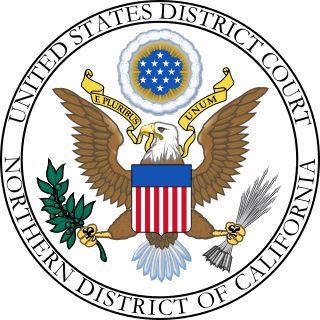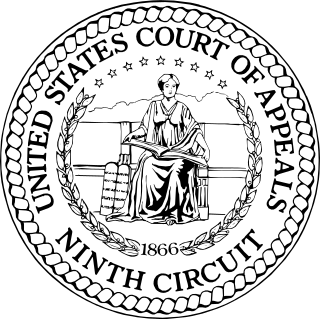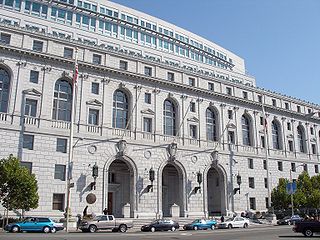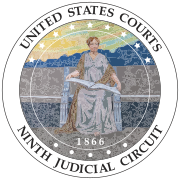In computing, source code is any collection of code, with or without comments, written using a human-readable programming language, usually as plain text. The source code of a program is specially designed to facilitate the work of computer programmers, who specify the actions to be performed by a computer mostly by writing source code. The source code is often transformed by an assembler or compiler into binary machine code that can be executed by the computer. The machine code might then be stored for execution at a later time. Alternatively, source code may be interpreted and thus immediately executed.

SCO Group, Inc. v. International Business Machines Corp., commonly abbreviated as SCO v. IBM, is a civil lawsuit in the United States District Court of Utah. The SCO Group asserted that there are legal uncertainties regarding the use of the Linux operating system due to alleged violations of IBM's Unix licenses in the development of Linux code at IBM. The lawsuit was filed in 2003, it has lingered on through the bankruptcy of SCO Group and the adverse result in SCO v. Novell, and was reopened for continued litigation by order of a new judge on June 14, 2013. Pursuant to the court order reopening the case, an IBM Motion for Summary Judgment was filed based upon the results of the Novell decision. On December 15, 2014, the judge granted most of IBM's motion, thereby narrowing the scope of the case, which remained open. On March 1, 2016, following a ruling against the last remaining claims, the judge dismissed SCO's suit against IBM with prejudice. SCO filed an appeal later that month. In February 2018, as a result of the appeal and the case being partially remanded to the circuit court, the parties restated their remaining claims and provided a plan to move toward final judgement.

MAI Systems Corp. v. Peak Computer, Inc., 991 F.2d 511, was a case heard by the United States Court of Appeals for the Ninth Circuit which addressed the issue of whether the loading of software programs into random-access memory (RAM) by a computer repair technician during maintenance constituted an unauthorized software copy and therefore a copyright violation. The court held that it did, although the United States Congress subsequently enacted an amendment to 17 U.S.C. § 117 to specifically overrule this holding in the circumstances of computer repair.
USL v. BSDi was a lawsuit brought in the United States in 1992 by Unix System Laboratories against Berkeley Software Design, Inc and the Regents of the University of California over intellectual property related to the Unix operating system; a culmination of the Unix wars. The case was settled out of court in 1994 after the judge expressed doubt in the validity of USL's intellectual property, with Novell and the University agreeing not to litigate further over the Berkeley Software Distribution (BSD).
A software license is a legal instrument governing the use or redistribution of software. Under United States copyright law, all software is copyright protected, in both source code and object code forms, unless that software was developed by the United States Government, in which case it cannot be copyrighted. Authors of copyrighted software can donate their software to the public domain, in which case it is also not covered by copyright and, as a result, cannot be licensed.
The SCO–Linux disputes were a series of legal and public disputes between the software company SCO Group (SCO) and various Linux vendors and users. The SCO Group alleged that its license agreements with IBM meant that source code IBM wrote and donated to be incorporated into Linux was added in violation of SCO's contractual rights. Members of the Linux community disagreed with SCO's claims; IBM, Novell and Red Hat filed claims against SCO.

SCO v. Novell was a United States lawsuit in which The SCO Group (SCO), a Linux and Unix vendor, claimed ownership of the source code for the Unix operating system. SCO sought to have the court declare that SCO owned the rights to the Unix code, including the copyrights, and that Novell had committed slander of title by asserting a rival claim to ownership of the Unix copyrights. Separately, SCO was attempting to collect license fees from Linux end-users for Unix code through their SCOsource division, and Novell's rival ownership claim was a direct challenge to this initiative.
Beginning in 2003, The SCO Group was involved in a dispute with various Linux vendors and users. SCO initiated a series of lawsuits, the most known of which were SCO v. IBM and SCO v. Novell, that had implications upon the futures of both Linux and Unix. SCO claimed that Linux violated some of SCO's intellectual properties. Many industry observers were skeptical of SCO's claims, and they were strongly contested by SCO's opponents in the lawsuits, some of which launched counter-claims. By 2011, the lawsuits fully related to Linux had been lost by SCO or rendered moot and SCO had gone into bankruptcy. However the SCO v. IBM suit continued for another decade, as it included contractual disputes related to both companies' involvement in Project Monterey in addition Linux-related claims. Finally in 2021 a settlement was reached in which IBM paid the bankruptcy trustee representing what remained of SCO the sum of $14.25 million.

Computer Associates International, Inc. v. Altai, Inc., 982 F.2d 693 is a decision from the United States Court of Appeals for the Second Circuit that addressed to what extent non-literal elements of software are protected by copyright law. The court used and recommended a three-step process called the Abstraction-Filtration-Comparison test. The case was an appeal from the United States District Court for the Eastern District of New York in which the district court found that defendant Altai's OSCAR 3.4 computer program had infringed plaintiff Computer Associates' copyrighted computer program entitled CA-SCHEDULER. The district court also found that Altai's OSCAR 3.5 program was not substantially similar to a portion of CA-SCHEDULER 7.0 called SYSTEM ADAPTER, and thus denied relief as to OSCAR 3.5. Finally, the district court concluded that Computer Associates' state law trade secret misappropriation claim against Altai was preempted by the federal Copyright Act. The appeal was heard by Judges Frank Altimari, John Daniel Mahoney, and John M. Walker, Jr. The majority opinion was written by Judge Walker. Judge Altimari concurred in part and dissented in part. The Second Circuit affirmed the district court's ruling as to copyright infringement, but vacated and remanded its holding on trade secret preemption.
Lexmark International, Inc. v. Static Control Components, Inc., is an American legal case involving the computer printer company Lexmark, which had designed an authentication system using a microcontroller so that only authorized toner cartridges could be used. The resulting litigation has resulted in significant decisions affecting United States intellectual property and trademark law.

Vault Corporation v Quaid Software Ltd. 847 F.2d 255 is a case heard by the United States Court of Appeals for the Fifth Circuit that tested the extent of software copyright. The court held that making RAM copies as an essential step in utilizing software was permissible under §117 of the Copyright Act even if they are used for a purpose that the copyright holder did not intend. It also applied the "substantial noninfringing uses" test from Sony Corp. of America v. Universal City Studios, Inc. to hold that Quaid's software, which defeated Vault's copy protection mechanism, did not make Quaid liable for contributory infringement. It held that Quaid's software was not a derivative work of Vault's software, despite having approximately 30 characters of source code in common. Finally, it held that the Louisiana Software License Enforcement Act clause permitting a copyright holder to prohibit software decompilation or disassembly was preempted by the Copyright Act, and was therefore unenforceable.

Jacobsen v. Katzer was a lawsuit between Robert Jacobsen (plaintiff) and Matthew Katzer (defendant), filed March 13, 2006 in the United States District Court for the Northern District of California. The case addressed claims on copyright, patent invalidity, cybersquatting, and Digital Millennium Copyright Act issues arising from Jacobsen under an open source license developing control software for model trains.
Proprietary software, also known as non-free software or closed-source software, is computer software for which the software's publisher or another person reserves some licensing rights to use, modify, share modifications, or share the software, restricting user freedom with the software they lease. It is the opposite of open-source or free software. Non-free software sometimes includes patent rights.
Field v. Google, Inc., 412 F.Supp. 2d 1106 is a case where Google Inc. successfully defended a lawsuit for copyright infringement. Field argued that Google infringed his exclusive right to reproduce his copyrighted works when it "cached" his website and made a copy of it available on its search engine. Google raised multiple defenses: fair use, implied license, estoppel, and Digital Millennium Copyright Act safe harbor protection. The court granted Google's motion for summary judgment and denied Field's motion for summary judgment.
Data General Corp. v. Digital Computer Controls, Inc. was a 1971 case in which the Delaware Court of Chancery determined that widespread, confidential disclosure of trade secrets does not necessarily compromise their secrecy. Data General Corporation distributed design documentation with its Nova 1200 minicomputer, notifying owners of the confidentiality of these design drawings through contractual agreements and explicit text on the drawings. After acquiring drawings with a Nova 1200 purchase, Digital Computer Controls designed its own nearly identical minicomputer. Digital Computer Controls maintained that its use of the documentation was proper because Data General Corporation inadequately maintained the secrecy of the design drawings by distributing them to many customers. The court found that Data General Corporation had sufficiently protected the secrecy of the drawings and that Digital Computer Controls was thus in violation of trade secret law for improperly using confidential information.

MDY Industries, LLC v. Blizzard Entertainment, Inc and Vivendi Games, Inc., 629 F.3d 928, is a case decided by the United States Court of Appeals for the Ninth Circuit. At the district court level, MDY had been found liable under theories of copyright and tort law for selling software that contributed to the breach of Blizzard's End User License Agreement (EULA) and Terms of Use (ToU) governing the World of Warcraft video game software.
The court's ruling was appealed to the United States Court of Appeals for the Ninth Circuit, which reversed the district court in part, upheld in part, and remanded for further proceedings. The Court of Appeals ruled that for a software licensee's violation of a contract to constitute copyright infringement, there must be a nexus between the license condition and the licensor’s exclusive rights of copyright. However, the court also ruled, contrary to Chamberlain v. Skylink, that a finding of circumvention under the Digital Millennium Copyright Act does not require a nexus between circumvention and actual copyright infringement.

Comprehensive Technologies International, Inc. v. Software Artisans, Inc., 3 F.3d 730 was a case in which the U.S. Court of Appeals for the Fourth Circuit discussed legal tests for software copyright infringement, and ruled that trade secret misappropriation requires more than circumstantial evidence. The case also ruled on what terms may be reasonable and enforceable in non-compete agreements.

DVD Copy Control Association, Inc. v. Bunner was a lawsuit that was filed by the DVD Copy Control Association in California, accusing Andrew Bunner and several others of misappropriation of trade secrets under California's implementation of the Uniform Trade Secrets Act. The case went through several rounds of appeals and was last heard and decided in February 2004 by the California Court of Appeal for the Sixth District.

Silvaco Data Systems v. Intel Corp was a trade secrets case heard before the California Court of Appeal for the Sixth District. Silvaco sued Intel for misappropriation of trade secrets because Intel used software produced by a third-party that had misappropriated Silvaco's trade secrets. The appeals court affirmed the decision of the trial court to grant summary judgment in favor of Intel, finding that merely using infringing software does not constitute a trade secret infringement in itself.
Free and open source software (FOSS) is distributed under a variety of free-software licenses. These licenses differ significantly from other kinds of software licenses. Legal action against open source licenses involves questions about their validity and enforceability.









